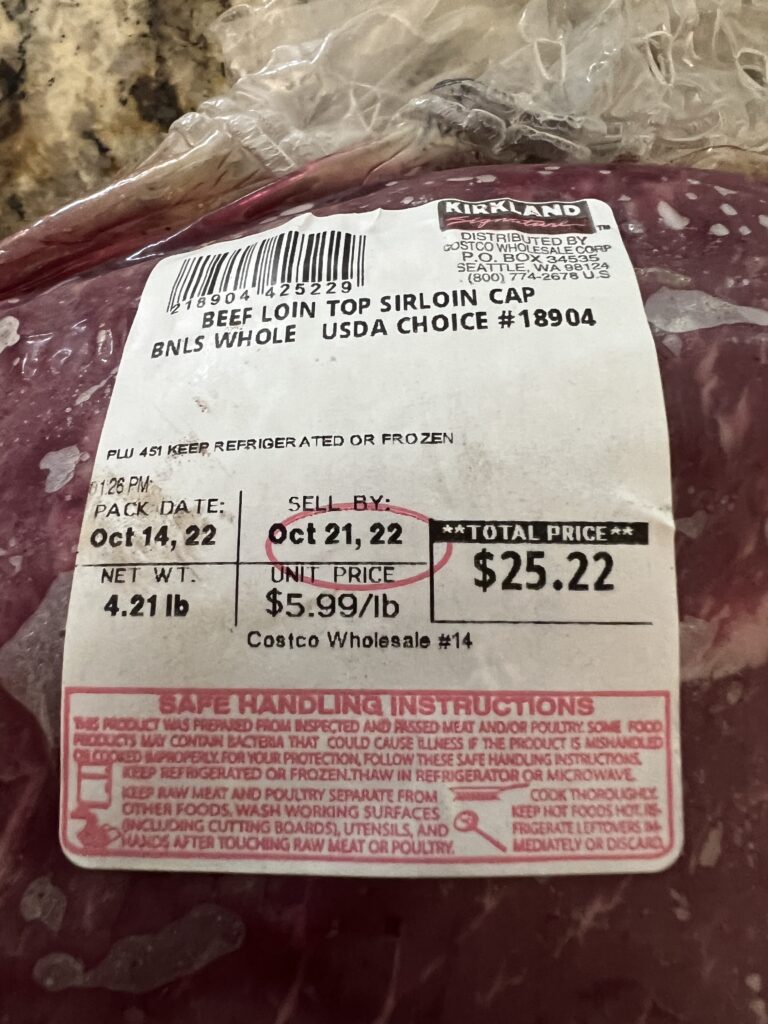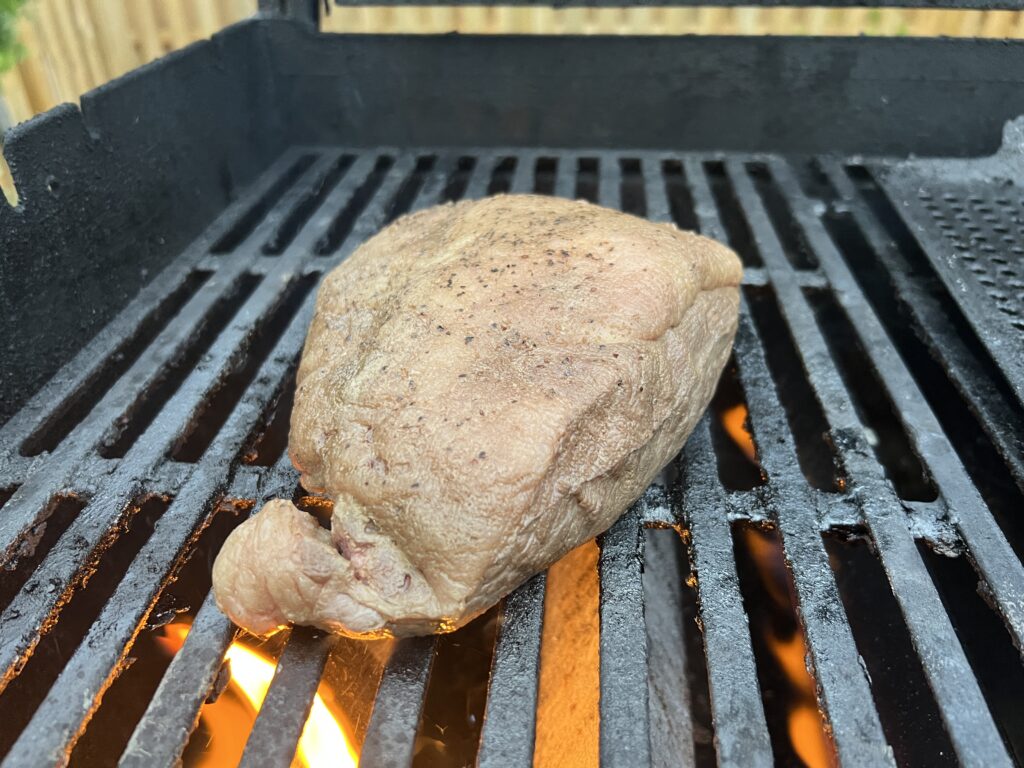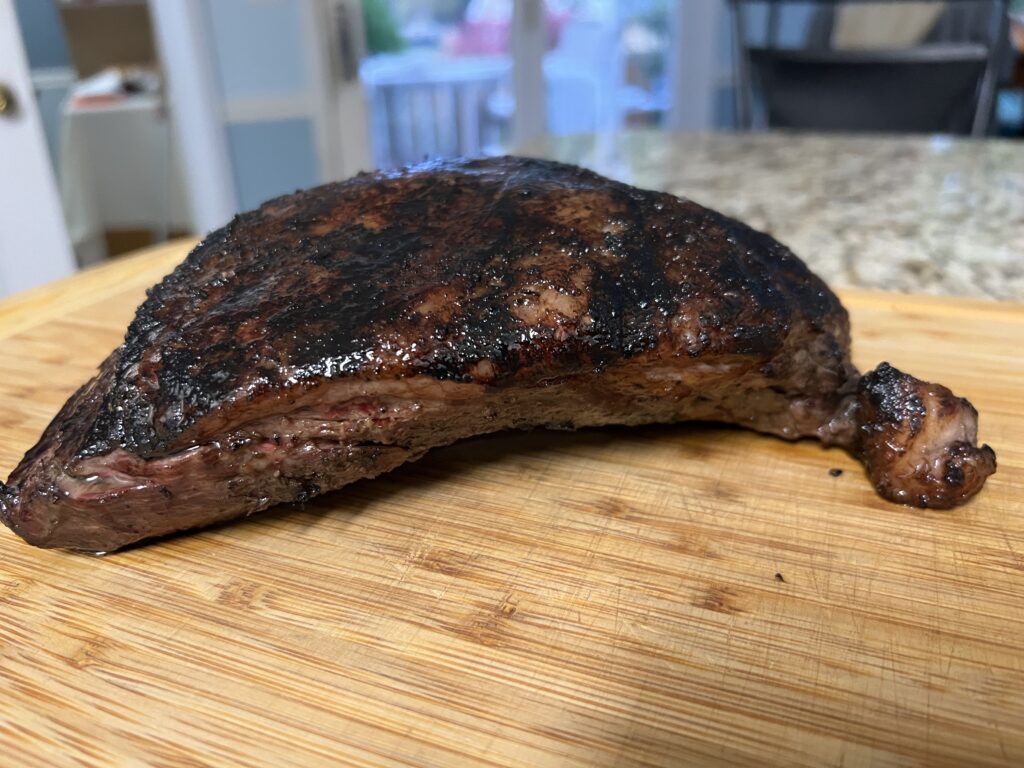Early on in my Sous Vide journey, I watched a lot of content by a youtube sensation “Sous Vide Everything“. I learned a lot early on, and perfected what I believe worked best for me, using this new method of cooking. Several things can be prepared really well using this method, others, I felt were not worth the extra effort. The one thing they always raved about was Picanha. Which is a sirlion with a top fat cap. The main advantage to cooking this way, is you can get a perfectly cooked piece of meat edge to eedge. This cut of meat with the fat cap will be perfectly rendered when completed.
I have never seen it sold at my local grocery stores, Kroger and Publix or Sprouts. I purchased the product after seeing it Costco several times, today I decided to make the purchase. When I looked at in the past, all the packages were about $40, so I jumped on this for $25.00.

The recommended preparation is to season and then Sous Vide. You can do this in a ziplock bag, or a reusable bag or a vacuum sealed bag. I have always used vacuum sealed bags for anything that I have prepared in the Sous Vide. Much to my surprise, there were two pieces and I seasoned both, sealed them separately and cooked one and froze the other. For the seasoning I used garlic powder, black pepper and salt. There are different ideas about the temp to cook it at, but I decided to cook it at 134. Based on the time that I had, it was cooking for 6 hours in the water. The temp determines how done the product gets, the time in the water determines how tender it will get. The main objective is to get the fat cap to render.

The final part of the cooking process is to sear the meat after it comes out of the Sous Vide. I have to admit, it is not very attractive after being in the vacuum sealed bag, in the water for 6 hours.

There is a risk on over cooking the meat, which has been precisely cooked at 134 degrees, which should result in medium rare finished product. The ensure that is did not occur, after removing the bag from the Sous Vide, I ran it under cold water to lower the temp, and prevent it from over cooking on the sear.
For the sear, there are several options, some use a flame with a propane tank, some use a screaming hot cast iron pan, some use a broiler in the oven. I decided to use my Weber propane which has a searing option. I let the grill get up to 600 degrees and then dropped it on the grill.

The sear took about 3-4 minutes, flipping every minute, to get a nice char on it.

I then let it rest about 5 minutes before slicing it. The results were better than expected, it was fanstastic. Cooked perfectly, and so tender. I am already looking forward to cooking the other one.
